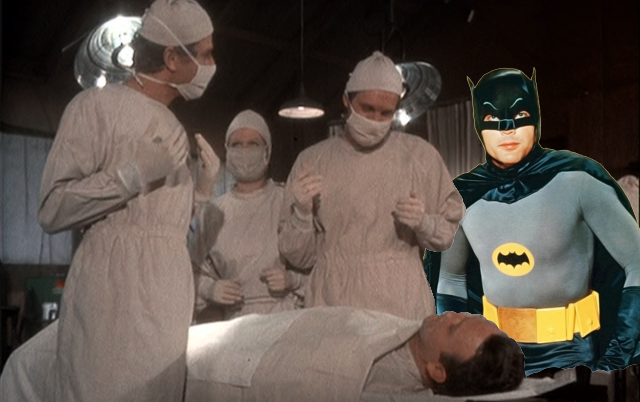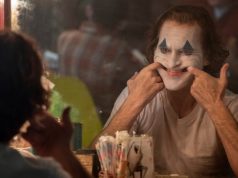
Robert Reed was a classically trained actor whose most famous role was that of the dad on “The Brady Bunch.” He was evidently a prickly fellow and constantly harassed the show’s producers about its lousy scripts. I get the feeling that for him, working on the show was like a gourmet chef having to take a job at McDonald’s.
I’ve just stumbled across an amazing memo that he wrote to the producers in response to a particular episode. It is amazing for two reasons. One, analyzing “The Brady Bunch” with high-minded theatrical philosophies is funny, and the seriousness with which Reed treated it is hilarious.
But two, in the process of explaining why “The Brady Bunch” sucks, Reed actually does a really good job of explaining the principles behind comedy, and why violating those principles usually results in failure.
Here is the memo. It is long and academic-sounding, but I truly do find it fascinating.
Robert Reed’s Orignal Memo Regarding Episode 116 [This was the final episode, and Reed wound up refusing to appear in it at all.]
To Sherwood Schwartz et al.
Notes: Robert Reed
There is a fundamental difference in theatre between:
1.Melodrama
2.Drama
3.Comedy
4.Farce
5.Slapstick
6.Satire &
7.Fantasy
They require not only a difference in terms of construction, but also in presentation and, most explicitly, styles of acting. Their dramatis peronsae are noninterchangable. For example, Hamlet, archtypical of the dramatic character, could not be written into Midsummer Night’s Dream and still retain his identity. Ophelia could not play a scene with Titania; Richard II could not be found in Twelfth Night. In other words, a character indigenous to one style of the theatre cannot function in any of the other styles.
Obviously, the precept holds true for any period. Andy Hardy could not suddenly appear in Citizen Kane, or even closer in style, Andy Hardy could not appear in a Laurel and Hardy film. Andy Hardy is a “comedic” character, Laurel and Hardy are of the purest slapstick. The boundaries are rigid, and within the confines of one theatric piece the style must remain constant.
Why? It is a long since proven theorem in the theatre that an audience will adjust its suspension of belief to the degree that the opening of the presentation leads them. When a curtain rises on two French maids in a farce set discussing the peccadilloes of their master, the audience is now set for an evening of theatre in a certain style, and are prepared to accept having excluded certain levels of reality. And that is the price difference in the styles of theatre, both for the actor and the writer–the degree of reality inherent. Pure drama and comedy are closest to core realism, slapstick and fantasy the farthest removed.
It is also part of that theorem that one cannot change styles midstream. How often do we read damning critical reviews of, let’s say, a drama in which a character has “hammed” or in stricter terms become melodramatic. How often have we criticized the “mumble and scratch” approach to Shakespearean melodrama, because ultra-realism is out of place when another style is required. And yet, any of these attacks could draw plaudits when played in the appropriate genre.
Television falls under exactly the same principle. What the networks in their oversimplification call “sitcoms” actually are quite diverse styles except where bastardized by careless writing or performing. For instance:
M*A*S*H….comedy
The Paul Lynde Show….Farce
Beverly Hillbillies…..Slapstick
Batman……Satire
I dream of Jeannie….Fantasy
And the same rules hold just as true. Imagine a scene in M*A*S*H in which Arthur Hill appears playing his “Owen Marshall” role, or Archie Bunker suddenly landing on “Gilligan’s Island” , or Dom Deluise and his mother in ” Mannix.” Of course, any of these actors could play in any of the series in different roles predicated on the appropriate style of acting. But the maxim implicit in all this is: when the first-act curtain rises on a comedy, the second act curtain has to rise on the same thing, with the actors playing in commensurate styles.
If it isn’t already clear, not only does the audience accept a certain level of belief, but so must the actor in order to function at all. His consciousness opens like an iris to allow the proper amount of reality into his acting subtext. And all of the actors in the same piece must deal with the same level, or the audience will not know to whom to adjust and will often empathize with the character with the most credibility–total reality eliciting the most complete empathic response.
Example: We are in the operating room in M*A*S*H, with the usual pan shot across a myriad of operating tables filled with surgical teams at work. The leads are sweating away at their work, and at the same time engaged in banter with the head nurse. Suddenly, the doors fly open and Batman appears! Now the scene cannot go on. The M*A*S*H characters, dealing with their own level of quasi-comic reality, having subtext pertinent to the scene, cannot accept as real in their own terms this other character. Oh yes, they could make fast adjustments. He is a deranged member of some battle-fatigued platoon and somehow came upon a Batman suit. But the Batman character cannot then play his intended character true to his own series. Even if it were possible to mix both styles, it would have to be dealt with by the characters, not just abruptly accepted. Meanwhile, the audience will stick with that level of reality to which they have been introduced, and unless the added character quickly adjusts, will reject him.
The most generic problem to date in “The Brady Bunch” has been this almost constant scripted inner transposition of styles.
1. A pie-throwing sequence tacked unceremoniously onto the end of a weak script.
2. The youngest daughter in a matter of a few unexplained hours managing to look and dance like Shirley Temple.
3. The middle boy happening to run into a look-alike in the halls of his school, with so exact a resemblance he fools his parents.
And the list goes on.
Once again, we are infused with the slapstick. The oldest boy’s hair turns bright orange in a twinkling of the writer’s eye, having been doused with a non-FDA-approved hair tonic. (Why any boy of Bobby’s age, or any age, would be investing in something as outmoded and unidentifiable as “hair tonic” remains to be explained. As any kid on the show could tell the writer, the old hair-tonic routine is right out of “Our Gang.” Let’s face it, we’re long since past the “little dab’ll do ya” era.)
Without belaboring the inequities of the script, which are varied and numerous, the major point to all this is: Once an actor has geared himself to play a given style with its prescribed level of belief, he cannot react to or accept within the same confines of the piece, a different style.
When the kid’s hair turns red, it is Batman in the operating room.
I can’t play it.
[Side note: I find it hilarious that Reed refers to his fictional children only by their relative ages, not by their names. He does not make a mistake when he refers to Bobby, however. It was Bobby who sold the hair tonic, and Greg — “the oldest boy” — whose hair was damaged by it.]
To summarize, Reed’s basic point is this: You cannot mix wildly different theatrical styles within the same production. If a show starts out being realistic (whether drama or comedy), then the audience expects realism. We don’t have to suspend our disbelief very much. But if suddenly a non-realistic element like slapstick or fantasy is injected, we are thrown off. We have not been prepared to accept something like that.
We have no problem accepting a fire-breathing dragon in a production that has already established itself as fantasy. But if that dragon were to appear in a Neil Simon comedy, we would find it baffling and unbelievable.
Reed seemed to be saying that it is impossible to successfully mix styles, and he’s wrong there. It is tricky, but it can be done. “The Simpsons” is a prime example. A single episode of that series might contain elements of fantasy, slapstick, satire, straightforward realistic comedy, and even the occasional dramatic moment that effectively tugs the heartstrings.
But “The Simpsons” is the exception, not the rule. Far more often we see failed attempts to combine styles. I noted two such movies opening just last week: “The Bucket List” and “First Sunday.” The latter, in particular, tries to employ slapstick (the least realistic kind of comedy) as well as serious religious drama (a very realistic style). “The Bucket List” doesn’t do much in the way of outright slapstick, but its mix of heavy drama and light comedy does not blend well.
Obviously, “the rules” don’t matter if the final product is successful. You don’t laugh at a movie and then think, “Wait a minute — this comedy is violating the rules! It’s not funny after all!” If it works, nothing else matters. But if you find yourself not enjoying a comedy, or if certain elements ring false or unbelievable, I suspect further analysis will reveal that it is breaking some rule or other — if not an element of Robert Reed’s dissertation on mixing styles, then some other Law of Comedy.
You have to know the rules before you can break them successfully. There is a difference between breaking the rules on purpose and simply not knowing what the rules are. I guarantee the “Simpsons” writers have had discussions about the mechanics of comedy and drama, and how to make different tones work for the show. (There have been some episodes where the mix did not work.) On the other hand, I suspect that David E. Talbert, the writer/director of “First Sunday,” just didn’t know what he was doing.




